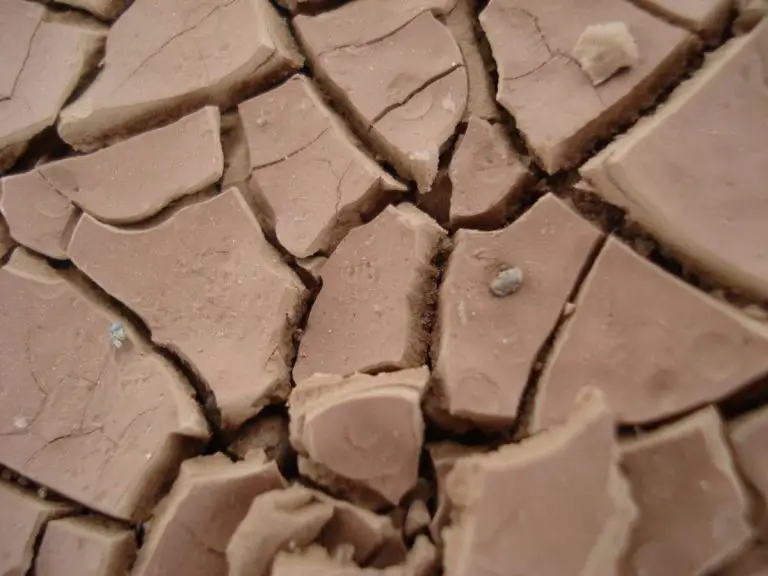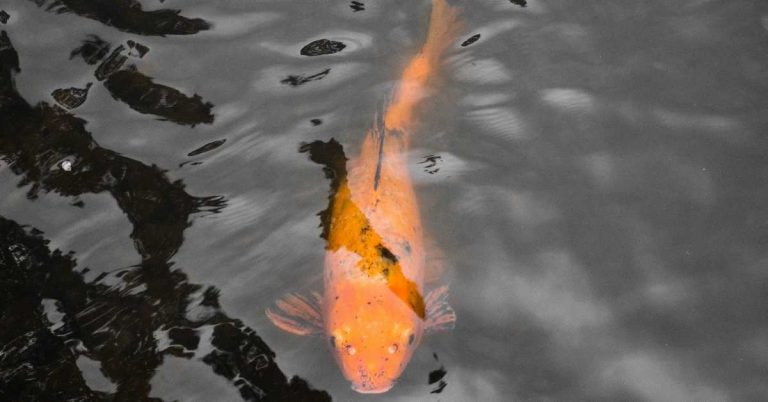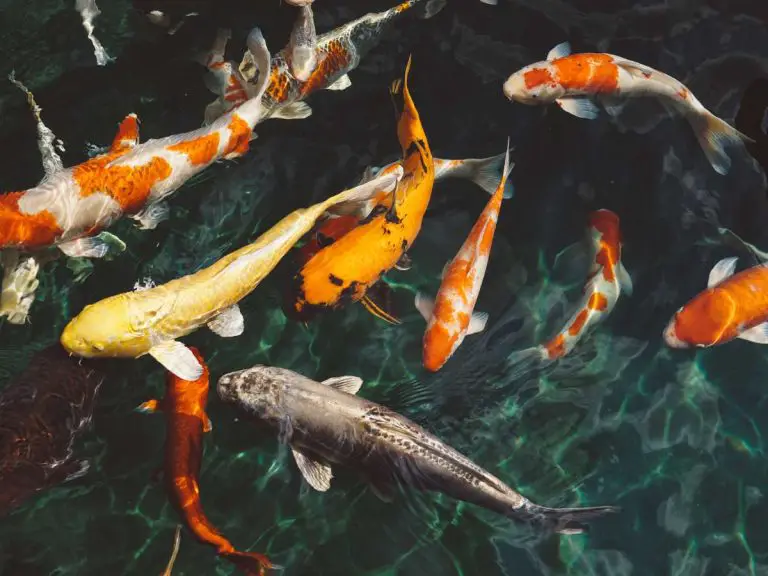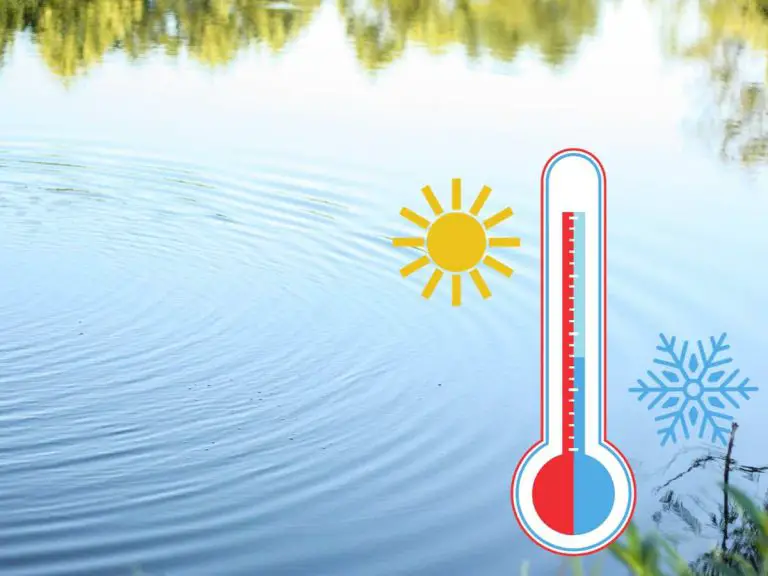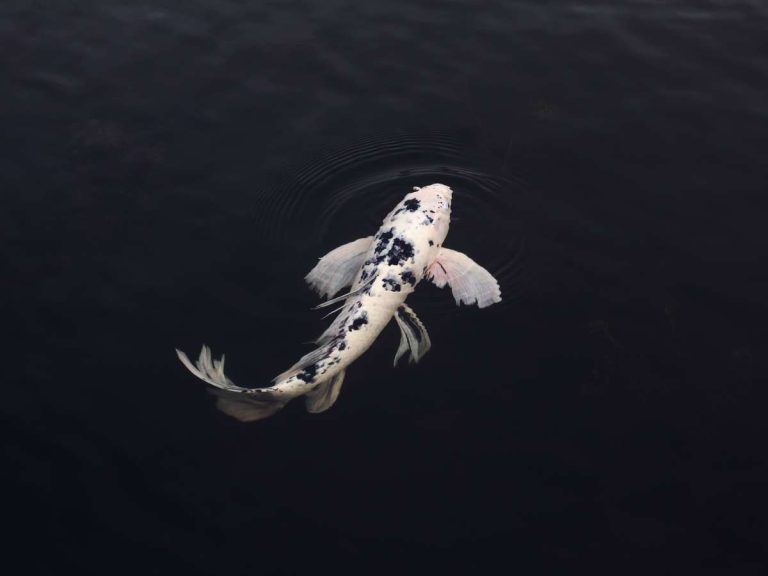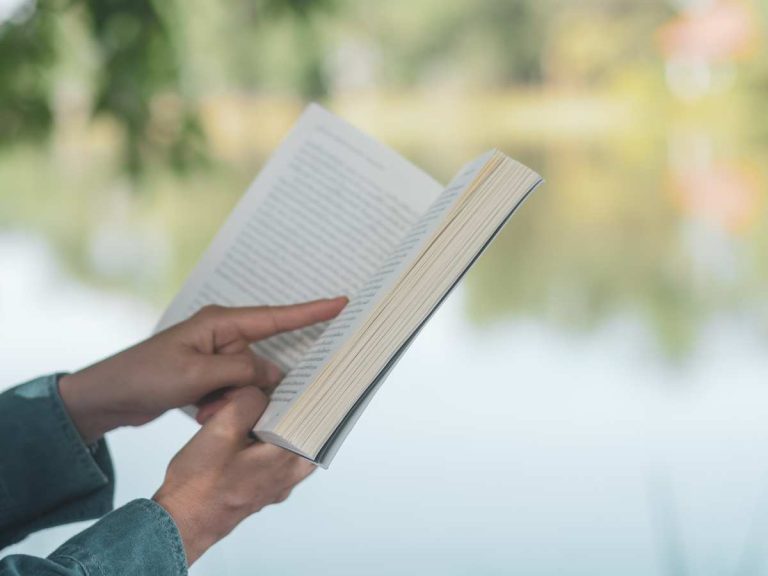Can Fish Eat Bread? Why This Common Food Is Killing Your Fish (And Your Pond)
I have many fond memories as a child of going to the local pond with my parents and feeding ducks and other wildlife pieces of stale bread from the pantry. I know now as an adult that feeding bread to birds is bad, but what about fish? I never really considered that fish were eating the bread in the first place because I couldn’t see them underwater, but of course they were. Can fish even eat bread? Here’s the answer:
Fish should not be fed bread under any circumstances because they are unable to digest it. Unlike humans, fish don’t have the ability to digest yeast and gluten which causes their stomachs to bloat and leads to complications like constipation and inflammation. Fish that have been fed bread will quickly become ill and eventually be eaten by predators.
Understanding why bread is so bad for fish first requires a little background knowledge of the chemistry involved in how bread is made. But the bad news doesn’t stop with the fish either. Bread can be damaging for any small body of water, including your backyard pond, even if a fish never eats it.
Let’s talk about why bread is so deadly for fish and why feeding fish, or any other animals, in your backyard pond risks the potential for ruining the balance of its delicate ecosystem.
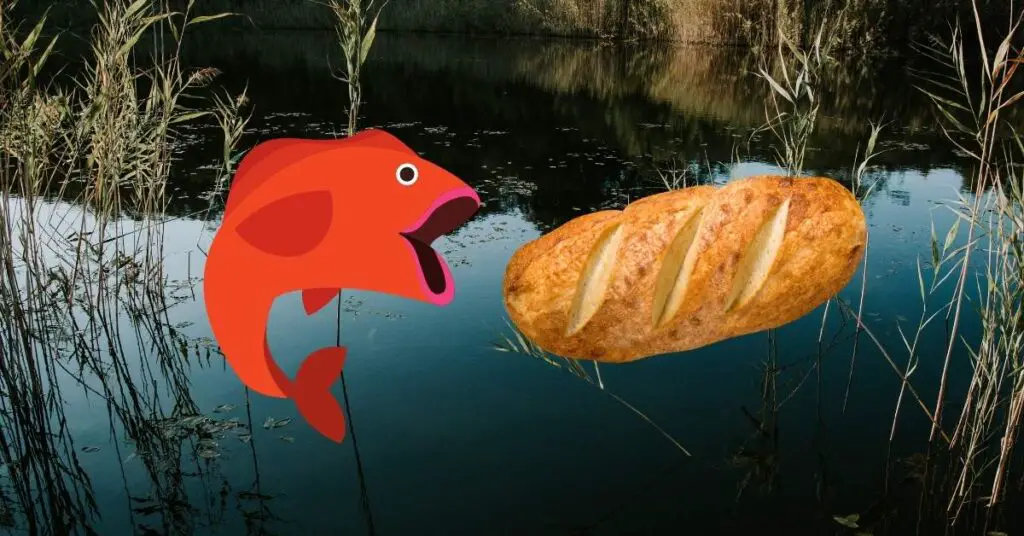
Why Bread Is Bad For Fish
Bread is made from three key ingredients: yeast, flour and water.
Yeast is a living organism that produces carbon dioxide, alcohol and acids as it feeds on the starches and sugars in the flour. This chemical process is what produces the gas that causes bread and pizza dough to rise as it rests or bakes at high temperatures in the oven.
When flour mixes with water it unravels chains of gluten contained in each tiny grain. These gluten chains link together with other chains of gluten to create a complex gluten network within the structure of the dough. This process is what gives bread dough it’s ability to stretch without breaking. A strong gluten network is also what traps the gasses produced by yeast activity to cause it to rise, kind of like a inflating a balloon with air.
These processes of yeast and gluten activity are exactly what makes bread so deadly for fish. Fish don’t have the ability to digest gluten or yeast normally as humans can, which means the bread isn’t being broken down in their stomachs. Instead, the bread essentially continues to ferment creating gas and expanding after the fish eats it. This gas builds up in their stomachs and causes severe bloating.
Imagine yourself after a huge meal of junk food with a swollen belly. This is what a fish goes through after even a small amount of bread, except it also causes constipation and swelling as well.
Not only does this put the fish at risk of natural, it also increases the risk that the fish will be eaten by a predator. This is because fish that are bloated and sick can’t swim or maneuver fast enough to escape bigger and more nimble fish not weighed down by bread and bloating.
Bread Negatively Affects Water Quality
Tearing up a stale loaf of bread to feed ducks and fish at a local pond might seem like a fun and harmless activity, but it actually carries with it real world consequences.
Besides making fish sick and possibly dying, bread has a negative affect on the quality of the water even if no animals eat it. This is especially true if you’re talking about a small backyard pond and not a large public pond with, potentially, millions of gallons of water to dilute whatever you throw in it.
In a smaller backyard pond, the effects of bread soaked water can be more pronounced. As bread floats on the surface of the pond it will begin to soak up water rapidly. When this happens, it won’t be long before the piece of bread sinks to the bottom of the pond and begins to decay.
This decay is what you should be most worried about when it comes to your backyard pond. As the bread decomposes, it releases chemicals and nutrients into the water which feeds unwanted bacteria and microorganisms in your pond. This can potentially lead murky water full of algae and a toxic soup of chemicals and gasses that are poisonous to fish.
Bread at the bottom of your pond poses many of the same problems as any other kind of food or organic debris allowed to sink and decay in a body of water. The buildup of gasses and toxic matter can encourage the water to “stratify”, or separate into distinct levels, which is one of the main causes of pond turnover.
You can read more about pond turnover and its deadly effects on your pond here.
Bread Can Disturb A Pond’s Ecosystem
Besides potentially killing your beloved pets, the main reason you don’t want to be throwing bread in your pond is because it can ruin its ecosystem.
A balanced ecosystem in a small backyard pond is a delicate thing that takes careful planning and building to achieve. It also takes quite a lot of maintenance work to keep it that way, including keeping the pond’s surface clear of debris. Most people do this by using a pond skimmer, either by hand with a net or by running an electric filter to filter out organic debris.
Keeping the pond’s surface is so important because any organic matter that’s allowed to sink to the bottom will eventually decay. When organic matter decays, it produces toxic gasses as well as lots of nutrients that get released into the water. These nutrients can feed the algae that’s naturally present in all water and cause it to bloom. When this happens, the water becomes saturated with a murky blue and green algae that can sap away food and resources from the organisms you want living in your pond like plants and fish.
But it doesn’t just end with murky water, letting food decay in your pond runs the risk of the entire ecosystem being turned on it’s head in a process called pond turnover.
When organic material decays at the bottom of a pond it releases gasses and all other kinds of material into the water. But instead of diluting evenly throughout the pond, it tends to settle at the bottom level. This leads to pond stratification which basically means a toxic bottom level of water, a healthy layer where fish can live above it, and the uppermost level filled with weeds, plants, etc.
This stratification is bad because it reduces the amount of healthy, clean water for your fish but it gets even worse when the seasons change. As the top layer of water gets colder due to weather or cold rain, it sinks to the bottom and disturbs the toxic layer below while mixing it with the clean water above. This depletes the overall oxygen levels in the pond and poisons whatever is living in it besides algae and other unwanted microorganisms.
So, in other words, bread not only can kill your fish it can also kill your entire pond if you let it get out of hand.
Related: Why Is A Backyard Pond An Ecosystem?
Feeding Fish Bread Causes Lots of Health Problems
Feeding your fish bread is dangerous for all the reason we talked about above, mainly because they can’t digest yeast or gluten. But a lot of the health problems they face after eating bread are similar to the ones they face from overeating in general, even when it’s food that’s meant for fish.
Here’s a quick breakdown of all the things that can go wrong if you feed your fish too much of anything, including bread:
| Trigger | How It Affects Fish |
|---|---|
| Ammonia & Nitrates | When food sinks to the bottom uneaten, the protein breaks down into toxic levels of ammonia and nitrates. |
| Oxygen Depletion | Organic matter needs oxygen to decay, so when bread or excess food decays in your pond it depletes the levels of dissolved oxygen available to all other life including plants and fish. |
| Low pH | As organic matter like bread or food decays in the pond, it creates acids as well as other gasses that makes the water more acidic. This can be deadly for fish in a pond with a carefully managed pH level. |
| Fin Rot | When fish are distressed, such as due to a change in environment or water quality, their fins can develop a shaggy appearance that’s indicative of their overall health. |
| Indigestion | A fish’s digestion changes as the water temperature changes due to their complex balance of gut bacteria. Overfeeding and food likes bread throws this balance out of whack causing various digestion problems. |
| Fatty Liver | Just like in humans, eating too much of the wrong kinds of foods causes liver problems and even, eventually death. |
| Algae Bloom | When organic matter decays, it releases nutrients that unwanted organisms like algae feed on. Too much uneaten food, bread or otherwise, is the perfect trigger for an algae bloom. |
| Murky Water | Decayed matter like bread or excess fish food can make your pond water cloudy and murky due to the compounds released during the breakdown process. |
| Mold | Any organic matter in your pond increases the possibility of mold growth. If you see white fuzz in or around your pond, it’s probably mold. |
| Flatworms | Flatworms are often found in unhealthy water with too much dissolved organic matter and known for eating fish eggs. |
Related Posts:
How Often Should I Clean My Backyard Pond?
Why Is A Backyard Pond An Ecosystem?
How To Tell If A Pond Has Turned Over
What pH Level Is Best For A Koi Pond?
Related Questions:
What Kind of Fish Eat Bread
No kind of fish can eat bread because fish don’t have the ability to digest gluten or yeast. However, most fish will eat bread if it’s presented to them so it can work as a good lure for fishing.
Does Bread Kill Fish
Bread can kill fish by causing swelling and inflammation in their stomachs as well as constipation. Bread also causes fish to feel sick and move lethargically which makes them vulnerable to being eaten by predators.
What Human Food Can Fish Eat?
While fish can’t eat bread, there are several kinds of human foods that are safe for fish to eat. Some of these include:
- Fish fillet
- Seafood
- Beefheart
- Hardboiled egg yolks
- Blanched lettuce
- Cooked peas
- cucumber
- sweet potatoes
- melon
Source: What ‘human foods’ are safe for fish? – Practical Fishkeeping
How Bad Is Bread For Fish?
Bread is one of the worst human foods you can feed fish because they don’t have the ability to digest gluten and yeast, two of the most common ingredients in bread. Bread can cause indigestion, bloating and eventually death if eaten by fish.

